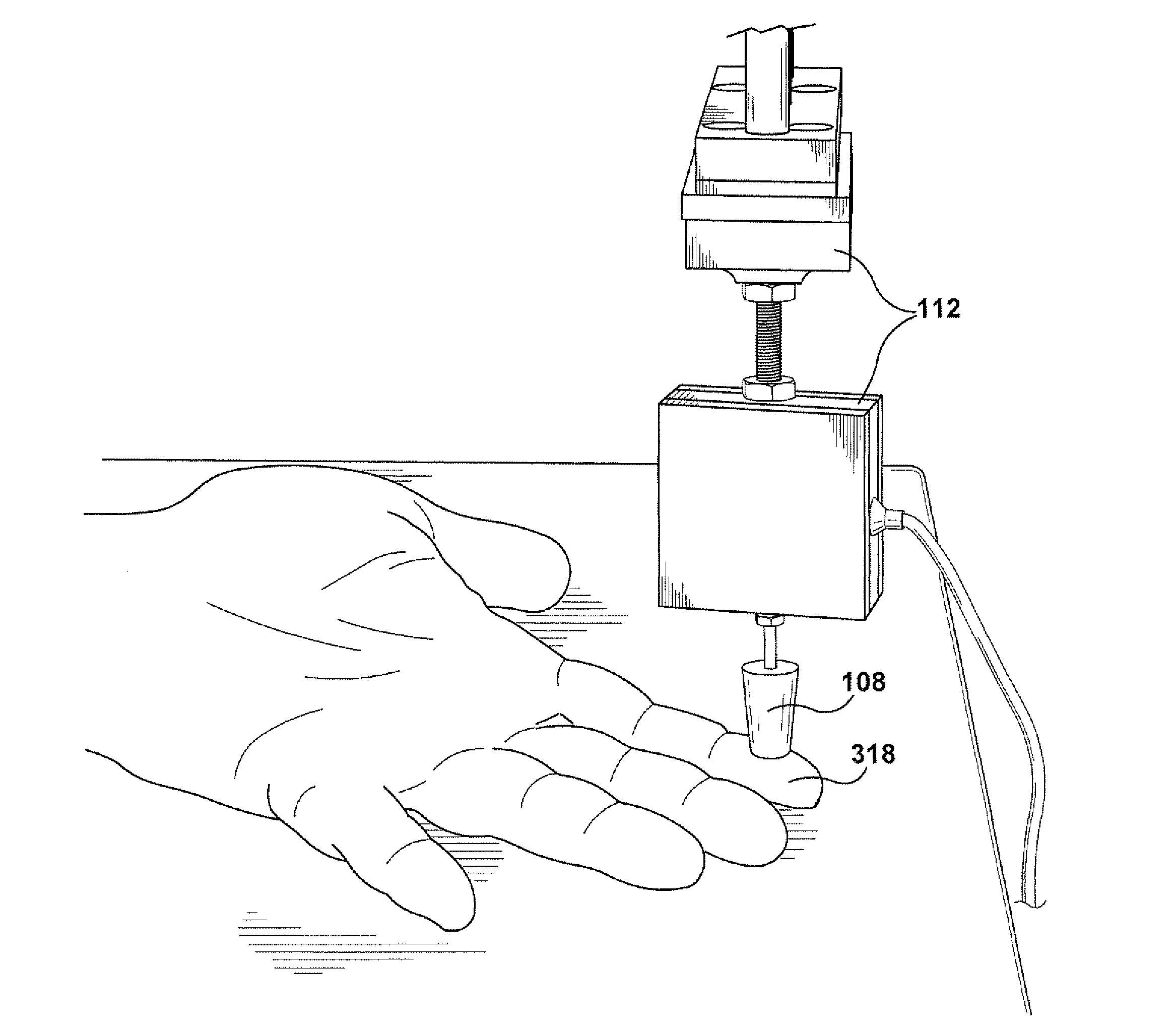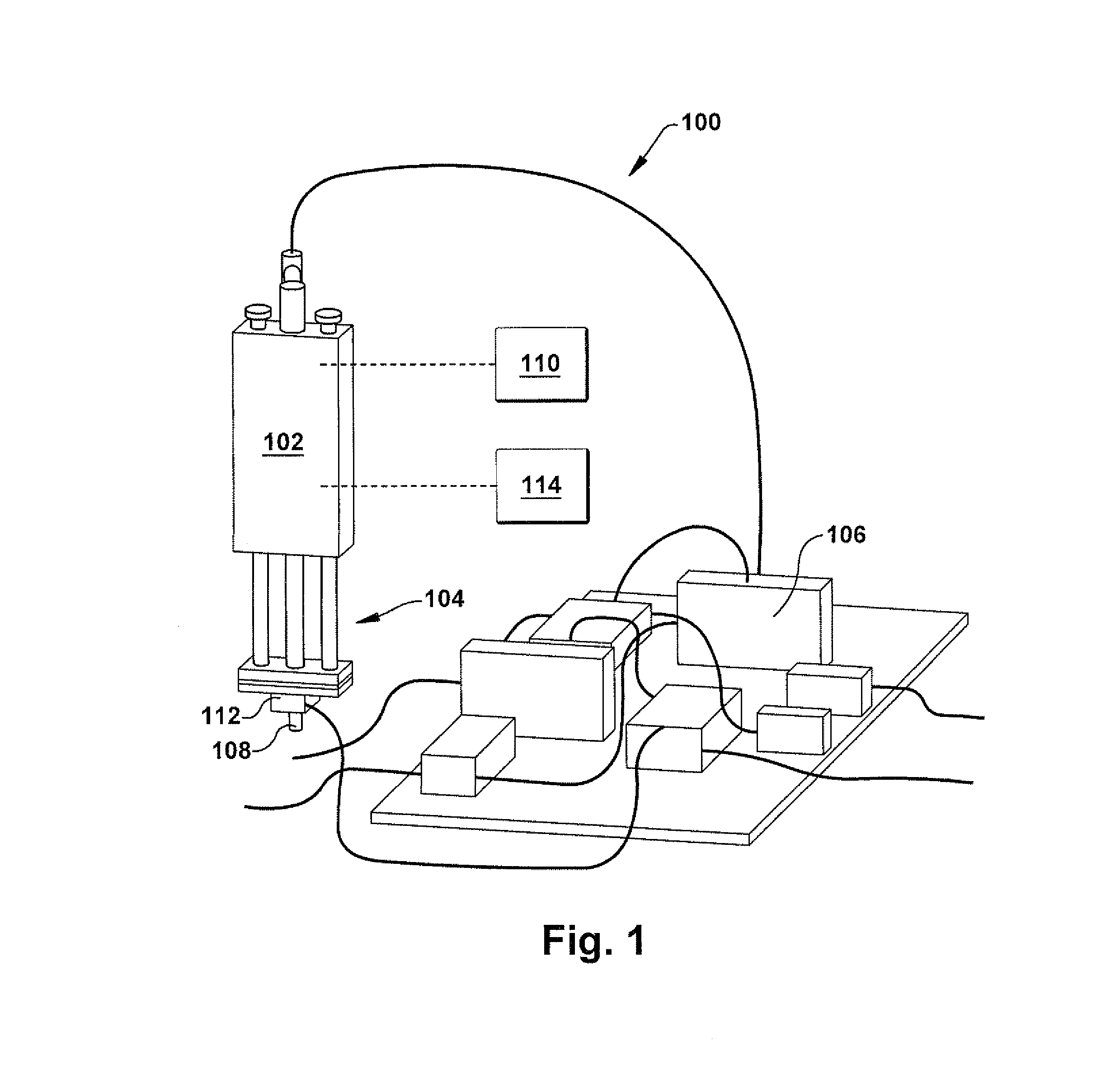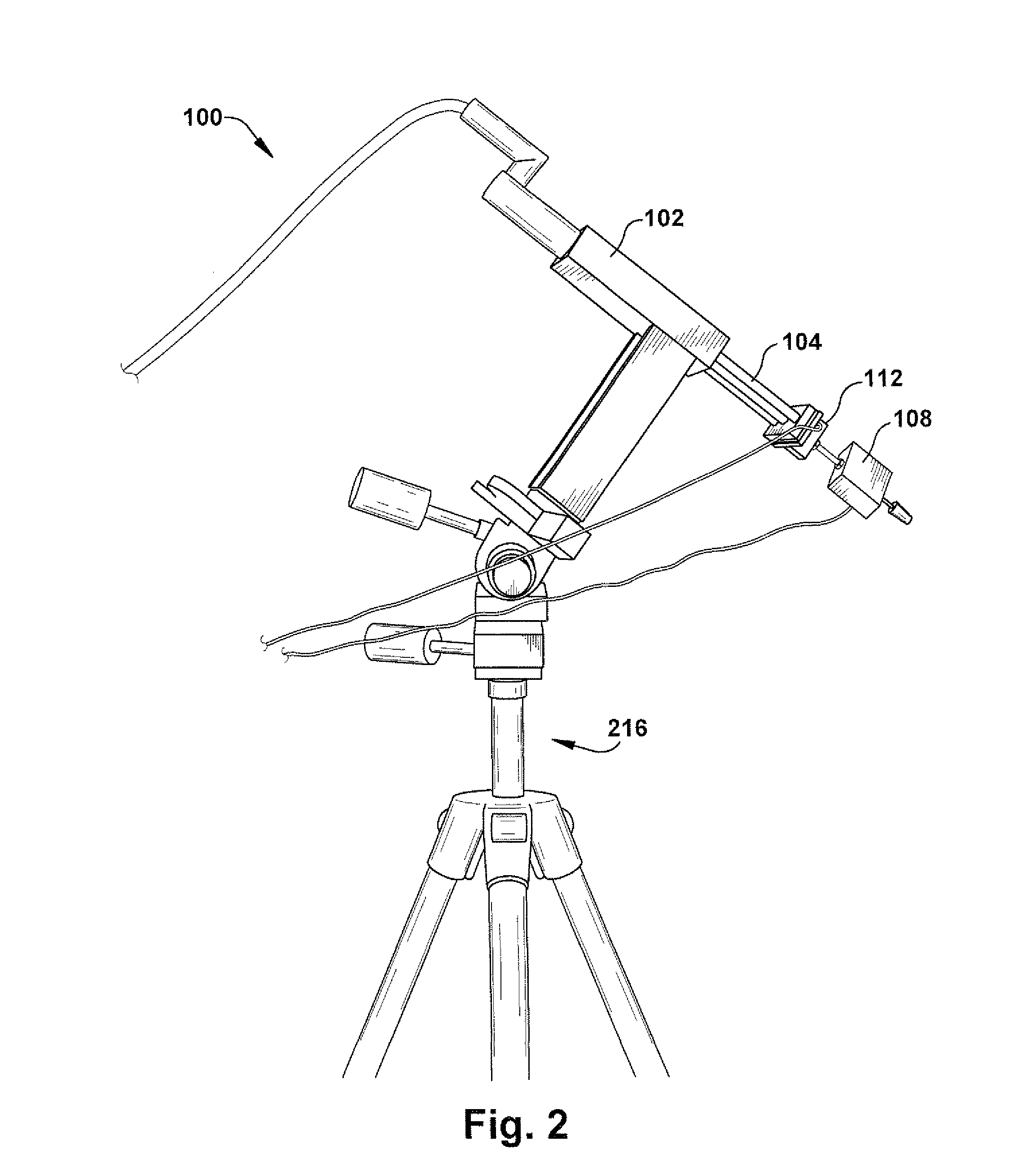Apparatus and method for exerting force on a subject tissue
a technology of subject tissue and apparatus, applied in the field of apparatus and method for exerting force on a subject tissue, can solve the problems of reducing the ability of a person to function effectively and enjoy life, affecting the patient's life, and affecting the patient's health
- Summary
- Abstract
- Description
- Claims
- Application Information
AI Technical Summary
Benefits of technology
Problems solved by technology
Method used
Image
Examples
Embodiment Construction
[0017]In accordance with the present invention, FIG. 1 depicts an apparatus 100 for exerting force on a subject tissue. The apparatus 100 can be used for mechanical somatosensory or somatomotor stimulation, or for any other desired purpose, some of which will be described in more detail below. (“Somatomotor” is used here to reference sensation pertaining to movements of the body.) The apparatus 100 includes a motor 102 for generating a force according to a predetermined force profile. The motor 102 may be directly coupled (i.e., without intervening structure) to a motor output member 104 to drivingly produce linear motion of the motor output member under direction of a motor controller 106 executing the predetermined force profile.
[0018]A linear motor may be used as the motor 102 for certain embodiments of the present invention. For certain applications of the present invention, linear motors may facilitate accurate control of linearly applied forces to the subject tissue in an econ...
PUM
 Login to View More
Login to View More Abstract
Description
Claims
Application Information
 Login to View More
Login to View More - R&D
- Intellectual Property
- Life Sciences
- Materials
- Tech Scout
- Unparalleled Data Quality
- Higher Quality Content
- 60% Fewer Hallucinations
Browse by: Latest US Patents, China's latest patents, Technical Efficacy Thesaurus, Application Domain, Technology Topic, Popular Technical Reports.
© 2025 PatSnap. All rights reserved.Legal|Privacy policy|Modern Slavery Act Transparency Statement|Sitemap|About US| Contact US: help@patsnap.com



